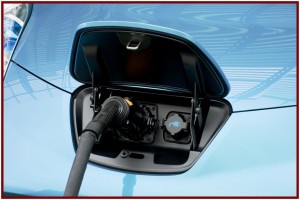
There’s already a lot of taxpayer money flowing through that EV recharging cord. Now utilities want a monopoly on charging stations?
The California Public Utilities Commission (PUC) is considering a PG&E proposal to monopolize electric vehicle charging infrastructure and to charge ratepayers to install 25,100 EV charging stations, whether or not they are electric vehicle drivers.
Consumer Watchdog says that this will raise costs for ratepayers while stifling innovation. PG&E’s proposal would pass through the estimated $653.8 million cost of the program to all ratepayers in their service territory, which covers most of central and northern California.
“Allowing PG&E to be the only decision maker with authority over the hardware, locations and pricing of this electric vehicle charging network will result in little to no incentive to keep costs low, particularly when these costs are being passed along to ratepayers,” Consumer Watchdog wrote in its petition. “Nor can we trust PG&E, which is the subject of ongoing scandal, to give consumers access to the most advanced technology for the least amount of money.”
PG&E is embroiled in several controversies starting with a power distribution ‘who pays’ argument with San Francisco that could cost customers millions. There are also charges of illegal communications between top executives at PG&E and Michael Peevey, the PUC’s president who resigned last December.
Critics say Peevey used informal means and not public meetings and violated his duties as an impartial regulator by making managerial decisions for the regulated utilities. Peevey’s dealings with the San Francisco-based power company is under scrutiny by the California state attorney general’s office and the U.S. Department of Justice. He recently received a search warrant on his La Cañada Flintridge home.
Then there is the 2010 San Bruno disaster with a pipeline explosion that killed eight people and destroyed 38 homes. How to penalize the company is the subject of intense lobbying. One of the PUC commissioners, Mike Florio, has recused himself because of e-mails that showed he helped a PG&E executive who was shopping for a preferred administrative law judge in a San Bruno-related rate-setting case.
“PG&E will be using this enormous investment to enter into a market activity in which it has no previous experience,” said Consumer Advocate Liza Tucker. “That creates real financial risk for ratepayers and real risk of an inappropriate, one-size-fits-all result of station infrastructure with limited features for both those who install stations and those who use them.
“Judging by thousands of emails made public that show PG&E actually dictated to the PUC what safety directive it should receive in the wake of the deadly San Bruno gas pipeline explosion, what’s to guarantee that PG&E will develop a plan that enables customer choice and advances the best technology without unnecessarily burdening ratepayers?” asked Tucker.

